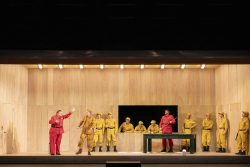Karagumi Theater Troupe Revives Beloved Play “Doro Ningyo;” Young Actors Carry on Performing Despite Playwright’s Death

Members of the Karagumi troupe
12:00 JST, May 24, 2024
The iconic red tent theater shakes with excitement as the actors inside leap about the stage. The dialogue they deliver during their performance is lively, filled with humor and lyricism – it is the work of the late playwright, director and actor Juro Kara. And now a younger generation of actors is enlivening the theater troupe he founded with a new wave of energy.
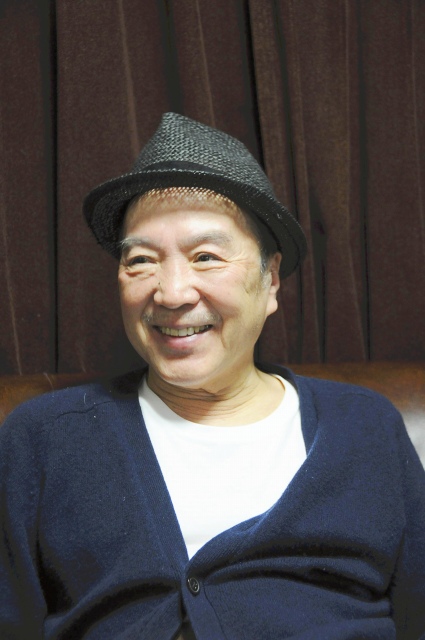
Juro Kara
The troupe, called the Karagumi (Kara group), is known for its unconventional approach: The actors themselves do all the preparations for stage productions, including setting up a mobile red tent at each venue, and they insist on going through with performing regardless of wind, rain or anything else that might get in the way. Currently, the troupe is staging a long-awaited revival of the play “Doro Ningyo” (Muddy mermaid), one of Kara’s masterpieces.
On May 4, the day before “Doro Ningyo” opened in Tokyo, Kara died of an acute subdural hematoma at a hospital in the capital. He was 84.
Kara, who headed the Karagumi until his death, first rose to prominence as the leader of the Jokyo Gekijo (Situation theater) troupe, becoming a major figure in the underground or “small theater” movement during the Showa era (1926-1989), alongside luminaries such as Shuji Terayama, another renowned poet and playwright.
In 1967, he set up his red tent theater for the first time. The theater, made from a single sheet on the grounds of Hanazono Shrine in Shinjuku Ward, Tokyo, provided a dramatic space shielded from the urban noise. After the Jokyo Gekijo dissolved, its work was taken up by the Karagumi, which Kara established in 1989.
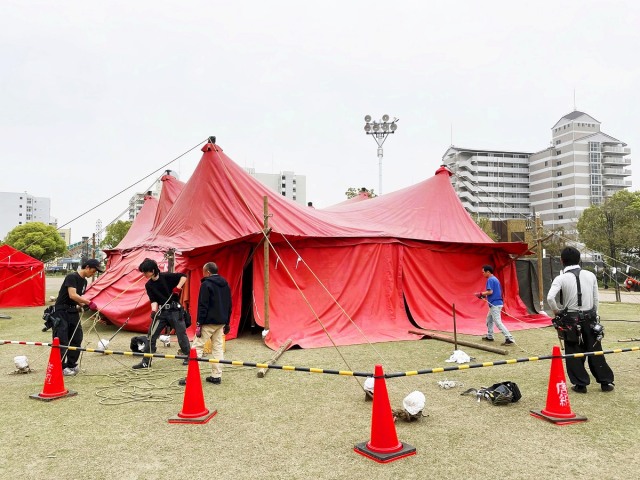
Karagumi’s mobile red tent theater set up in Minatogawa Park in Kobe
The play “Doro Ningyo” originally premiered in 2003. It is about the controversial Isahaya Bay reclamation project in Nagasaki Prefecture, and depicts a tin sheet production shop in a far corner of a big city that is connected to a fishing community along Isahaya Bay.
Kara visited the Isahaya Bay area for research before writing the script, which went on to be widely acclaimed and win awards including the Yomiuri Literature Prize for drama.
At the time of the reclamation project, shocking images of the bay being divided by a dike consisting of a line of steel plates, which dropped into position like guillotine blades, were displayed in the news media. These plates would be represented in the play by a line of tin sheets. In one widely talked-about scene, Kara would jump into a tank of water that represented the muddy sea around the tidal flat.

A scene from the first performance of “Doro Ningyo” in 2003
The current production of the play is the first time in 21 years that it has been performed by the Karagumi. Young actors have been selected for the production, forming a cast symbolizing a “new era of the Karagumi.”
The following material is based on interviews with Karagumi’s actors and staff members were conducted by The Yomiuri Shimbun before Kara died.
Kara’s magic words
When I visited the troupe’s rehearsal room in Suginami Ward, Tokyo, in early April, it seemed as if I had wandered into the Showa era: I saw tools for making tin sheets and props such as an old-fashioned hot-water bottle placed side by side.
The story is about a former fisherman named Keiichi, who lives in a tin shop in a large city after leaving a seaside town whose residents were divided over a “guillotine” dike like the one in Isahaya. Yuki Fukumoto, 30, is playing the lead role, which was first played by Takuo Inari, one of the Karagumi’s star actors.
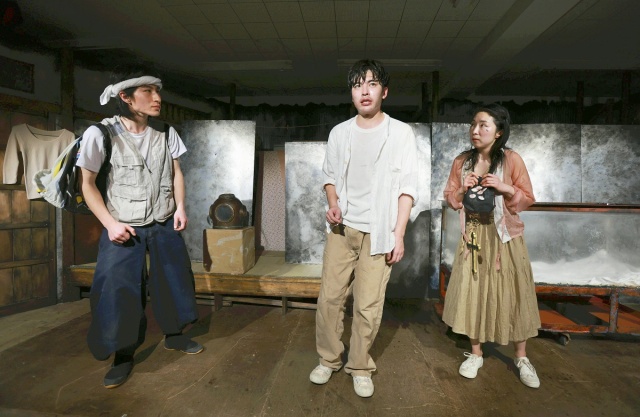
Actors rehearse in front of a hand-crafted stage set that represents a dike of steel plates.
Fukumoto wanted to become an actor, and he spoke about it to his high school teacher who was also a guidance counselor. Then, he entered the Nihon University College of Art, where he met Kara’s son Sasuke Otsuru, who was also a student at the university. He took Fukumoto to a performance of “Hitode” (Starfish) in the spring of 2012. Unfortunately, Kara suffered a serious injury during the period when this show was running and never returned to the stage.
“I didn’t understand the meaning of the story at all, but from the performance, I felt the passion,” Fukumoto said. “At the end, [the back of the stage] opened up suddenly, which gave me goosebumps. I admired Inari and decided to become an actor like him.”
Fukumoto is currently not a member of the Karagumi, so he is playing the lead role as a guest actor, as he did in the troupe’s previous performance.
He says that as an outsider, he recognizes that the troupe’s charm is “the magic of Kara’s words,” which is poetic and endlessly stimulates the imagination.
“As long as there’s a connection [to the role] inside me, the words will come out of my core,” he said. “I’m sometimes surprised by how fast I’m able to speak – It’s like Kara has me on a fishing line that he pulls and spins me around.”
Too moved not to join
Minion Otsuru, 32, who is acting as Yasumi, the heroine who follows Keiichi out of the seaside town, is Kara’s daughter. Otsuru first saw her father perform when she was 5 years old.
“‘Doro Ningyo’ is one that really sticks in my memory,” she said. “When Yuki Fujii played Yasumi, she played her as an unconventional heroine. I thought [my father] wrote the role with a different perspective on the world.”
Otsuru is not good at speaking in public and she had never dreamed of acting in her father’s performances. When she was 17 years old, she saw a filmed performance of “Jaguar no Me” (The jaguar’s eye), a 1985 play that Kara dedicated to Shuji Terayama, and was so moved that she asked her father to let her take the red tent stage.
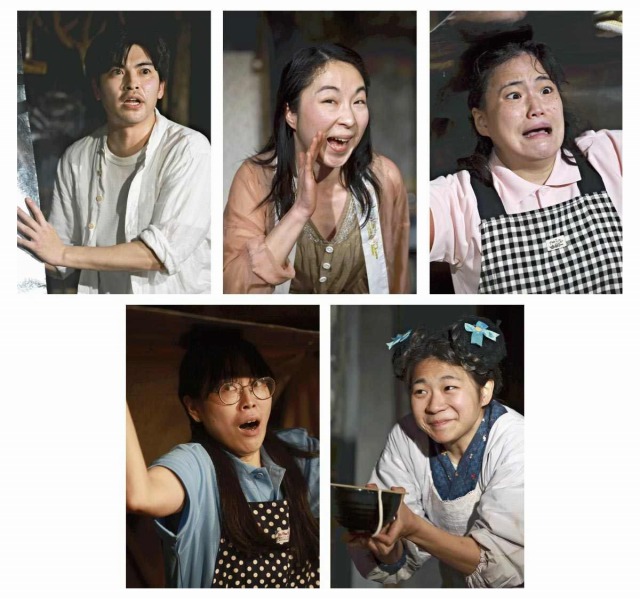
Clockwise from top left: Yuki Fukumoto, Minion Otsuru, Yukari Fukuhara, Ai Masuda and Nona Kato
Once she did, she found that it was a world where the audience freely shouted “Kara!” and other things to the actors, while sweat and water from the stage splashed the tightly packed crowd on their straw mats.
“It’s like playing catch with the audience. It’s always very enjoyable,” Otsuru said.
She worked as a freelance actress for a while, but when she heard that a 20-year-old woman had joined the Karagumi, she thought, “It’s time for me to get serious.” So after their 2019 performance of “Jaguar no me,” she became a member of the troupe.
Powerful actresses
One of the strengths of the Karagumi is its actresses, who are active both on the stage and behind the scenes.
Yukari Fukuhara, 34, who really shines when playing eccentric characters, worked for a theater production company after graduating from Nihon University College of Art. “I made a lot of money and wasn’t too busy, but it didn’t excite me,” she recalls.
Then she recalled a performance she saw in the red tent theater when she was in college. She learned that the troupe was recruiting when she saw a notice that read, “If you have passion, knock on our door.” She then took their test and joined the troupe in 2016.
“Reading Kara’s scripts feels like eating freshly cooked rice, even though they were written years ago,” Fukuhara said. “They always have elements that are relevant to what is happening today.”
Nona Kato, 43, who also works as an assistant director and is responsible for costumes in addition to acting, came to Tokyo from Gifu Prefecture at the age of 27 to become an actress. After studying at an acting school for a year, she formed a theater company with friends, saying, “There are no good plays running, so let’s do one ourselves.”
The first Karagumi play she saw was “Yuzaka Doji” (Boy on the hill at sunset) in the spring of 2008, in which Kara appeared on the stage with a dog art piece on his back.
She thought, “I didn’t understand the story, but I cried at the end. Why? The only way to find out the secret is to participate in the creative process.” She joined the troupe in 2017. She also had the opportunity to direct a performance of “Akai Kutsu” (Red shoes) by young actors in February last year.
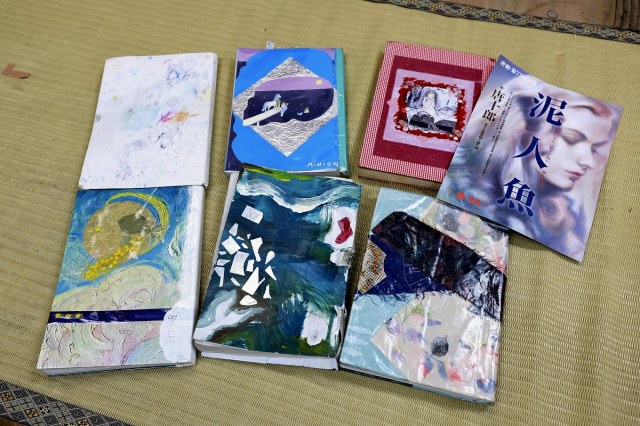
Troupe members have attached covers of their own designs to their respective scripts.
Ai Masuda, 25, joined the troupe in 2019. She has superbly portrayed distinctive characters, such as a waitress who serves coffee out of her ear holes in a performance of “Itojoro” (Thread prostitute) last fall.
When she studied theatrical productions at a vocational school, she heard that an older classmate would be assisting with a performance by the Shinjuku Ryozanpaku theater company of Kara’s “Yunicon Monogatari” (Unicorn story), so she went to see it. She was blown away. After the experience, she wanted to become a member of Karagumi, even though she had never seen them perform, so she took their employment test and came on board.
About the scripts written by Kara, Masuda said: “His ideas are amazing. I’m always surprised that he wrote these things just from his imagination.”
She also said: “I want to do more performances in different areas, and eventually even overseas.”
The troupe will perform “Doro Ningyo” through June 16 at the Fureai Hiroba square in Joyama Park in Nagano; the Kishimojin temple in Zoshigaya, Tokyo; and Hanazono Shrine in Shinjuku, Tokyo.
"Culture" POPULAR ARTICLE
-

Van Cleef & Arpels Dazzles with Art Deco Artisanry at Tokyo Exhibit
-

Disney’s ‘Twisted-Wonderland’ Animated Series Puts Villains in Spotlight: New Show Features School Inspired by Classic Disney Films
-

Ayumi Hamasaki’s Shanghai Concert Canceled Day Before Schedule as Part of Beijing Backlash
-

‘The World Masterpiece Theater Series’ Celebrates 50 Years; Animator Looks Back on Creating Anime Classics
-

Popularity of Piggy Banks Across Time and Place Seen at Bank’s Museum of Money Boxes in Hyogo Pref.
JN ACCESS RANKING
-

Tokyo Economic Security Forum to Hold Inaugural Meeting Amid Tense Global Environment
-

Keidanren Chairman Yoshinobu Tsutsui Visits Kashiwazaki-Kariwa Nuclear Power Plant; Inspects New Emergency Safety System
-

Imports of Rare Earths from China Facing Delays, May Be Caused by Deterioration of Japan-China Relations
-

University of Tokyo Professor Discusses Japanese Economic Security in Interview Ahead of Forum
-

Japan Pulls out of Vietnam Nuclear Project, Complicating Hanoi’s Power Plans


_0001-250x189.jpg)
